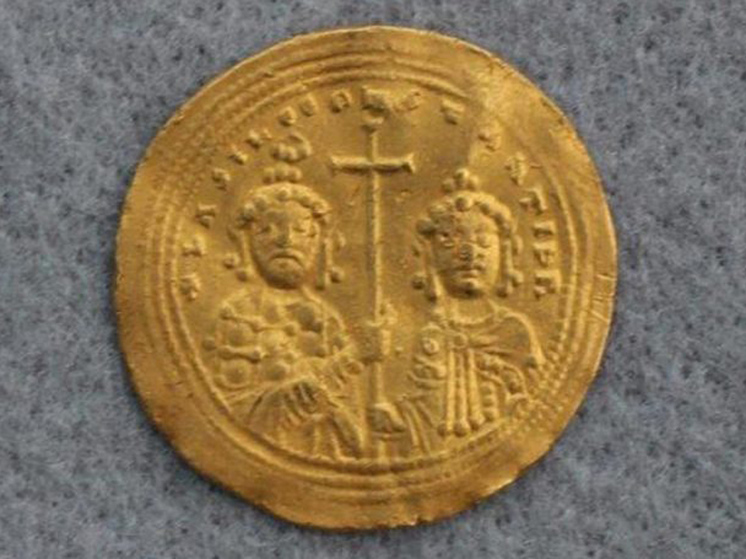Versions of how the artifact got to Scandinavia have been named
A rare Byzantine gold coin, probably brought from Constantinople, was discovered in Norway, far from the territory of modern Turkey.
 Photo: INNLANDET COUNTY MUNICIPALITY
Photo: INNLANDET COUNTY MUNICIPALITY
A metal detector exploring the mountains in the municipality of Vestre Slidre in southern Norway discovered the rare “nomisma histamenon” (literally standard coin), a Byzantine solid gold coin minted in Constantinople around 960 AD, featuring an image of Jesus Christ.
As reported by Arkeonews, the ancient coin is exceptionally well preserved given its appearance. This is the only coin of its kind ever found in Norway.
Innlandet County Municipality said in a press release. “The coin has been preserved exceptionally well. The coin appears virtually unchanged since its loss, perhaps a thousand years ago.
The ancient coin was introduced into circulation in the Byzantine Empire, also called the Eastern Roman Empire, and was likely minted in Constantinople, the capital of the Byzantine Empire. ; present-day Istanbul.
On one side of the coin, Christ is depicted holding a Bible, and on the other, the emperors Basil II (left) and Constantine VIII (right) are probably minted. Both of them were brothers and ruled together. This means that the artifact must have traveled more than 1,600 miles from its place of origin to the place where it was found.
The coin was minted at the end of the reigns of Basil II and Constantine VIII, sometime between 977 and 1025 AD, as evidenced by the triple dotted border surrounding the coin.
The gold coin also has written inscriptions. On one, written in Latin with the seal of Christ, it is written: “Jesus Christ, king of kings.” On the other, written in Greek on the reverse side of the coin: “Basilius and Constantine, Emperors of the Romans.”
Archaeologists suggest that the rare and valuable coin may have found its way to Norway along with heavy booty that the future King Harald III, aka Harald Hardrada, brought home after a decade spent in the Varangian Guard of the Byzantine Empire.
"At that time, it was customary for the guards to be given the right to plunder the palace and take all the valuables they could find when the emperor was dying. During the reign of Harald, three emperors died in Byzantium”, – officials said. Thus, the former king could have purchased a gold coin in Constantinople and taken it with him to Norway.
The gold coin could also have come into circulation through the early salt trade, whose transport routes ran perpendicularly from Western Norway across the country.























































Свежие комментарии